 Following the loss of the province of Tripolitania (modern-day Libya) to Italy in the 1911-1912 war, the local Sanusi tribe sustained its resistance against the Italians. The Sanusi militia, under the leadership of Ahmad al-Sharif, engaged in combat in Fezzan and southern Tripolitania, thwarting Italian consolidation in these territories.
Following the loss of the province of Tripolitania (modern-day Libya) to Italy in the 1911-1912 war, the local Sanusi tribe sustained its resistance against the Italians. The Sanusi militia, under the leadership of Ahmad al-Sharif, engaged in combat in Fezzan and southern Tripolitania, thwarting Italian consolidation in these territories.
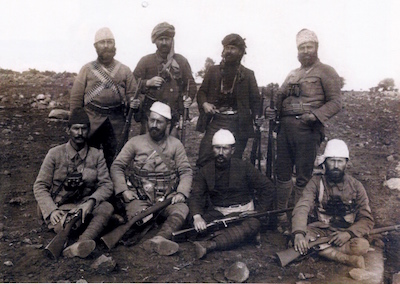
In Tripolitania, a contingent of Turkish officers played a crucial role. The Ottoman government consistently supported local tribesmen by dispatching military officers to train the Sanusi militia. By aiding the resistance in Tripolitania, the Sublime Porte aimed to reinstate its sovereignty and prestige in the region. Additionally, the Ottoman government sought to open a new front, diverting British troops and thereby diminishing the opposition faced by the Germans in other theatres of war.
As the First World War loomed, the Sanusi militia, boasting a manpower of ten thousand, had been meticulously trained by Turkish officers affiliated with the secret service Teşkilat-ı Mahsusa. With the declaration of Holy War in Istanbul in November 1914, the well-prepared Sanusi militia launched attacks against the Italians, achieving regional superiority through a series of successful operations. By January 1915, Fezzan had been liberated, and by July of the same year, the inner regions were purged of Italian forces, who were subsequently compelled to retreat northward to the Mediterranean coast.
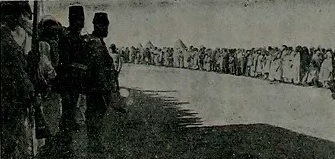
When Italy declared war on Central Powers on 24 May 1915, the Italian-Sanusi War seamlessly integrated into the broader context of the World War. Among the justifications for Italy's declaration of war was the perceived non-adherence of the Ottoman Empire to the stipulations of the Ouchy Treaty. This assertion held merit, considering the actions of Turkish officers in the specified region.

Consequent to the Sanusi offensive's triumph and in response to the appeal of the local populace, the Ottoman Empire formally declared the annexation of Tripolitania on 15 October 1915. The Ottoman General Staff commenced the dispatch of advisors and weaponry to Ahmad al-Sharif, who, assuming the title of Amir-al-Muminin (Commander of the Faithful) for Africa, spearheaded the resistance. Concurrently, a Turkish infantry battalion, supported by clandestine service personnel and a German squad, was deployed. Ahmad, reciprocally, aligned the Sanusis with the Central Powers, with the strategic aim of diverting the attention of Italian and British forces in North Africa.
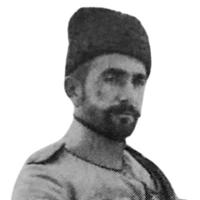
In 1916, Turkish officers assumed leadership roles in a Sanusi campaign aimed at penetrating Egypt. The Sanusi militia launched an assault on the Egyptian frontier, guarded by British forces. This military endeavour proved fruitful, compelling the British forces to vacate Sollum and Seyd-i Barani, subsequently retreating to the town of Matrukh. ![]()
Sanusi endeavoured to engage the British and initiated a renewed offensive towards Matrukh; however, this endeavour proved unsuccessful. Ahmad al-Sharif, disenchanted with Sanusi's political and military leadership, tendered his resignation. Sanusi's waning influence stemmed not only from battlefield defeats but also from emerging differences of opinion among the Sanusi sheikhs. Initially retreating to Djarabub, he subsequently fled to Turkey aboard a German submarine. His cousin, Mohammed Idris, assumed the mantle of leadership.
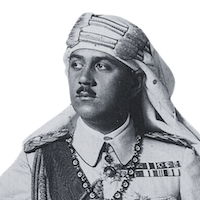
Concurrently, in a bid to coordinate efforts in North Africa, the Ottoman General Staff established the Army Group Africa, with a primary focus on the coastal regions of Libya. Lieutenant Colonel Nuri Bey, the brother of Enver Pasha, assumed command of this army group.
Italian forces, ensnared in Zuwarah, Al Khums, and Tripoli, made two unsuccessful attempts to break through the encirclement by Turkish-Sanusi forces in January and April 1917. In September of the same year, a substantial offensive by the Army Group Africa in Tripoli extinguished all Italian aspirations.
On 3 January 1918, Lieutenant Colonel Nuri Bey assumed command of the newly established Army of Islam and departed for Azerbaijan. His position was subsequently filled by Crown Prince Osman Fuad Efendi. Despite several unsuccessful Italian attempts to breach the encirclement in 1918, the conclusion of the First World War found Italian forces in Tripolitania confined to coastal enclaves, most of which were under siege conditions. With the exception of the harbours of Tripoli, Al Khums, and Zwara, the greater Tripoli region, Fezzan, Agades, and all territories west of Lake Tchad, including the Al Fasher region extending down to the Sudanese border, were under the complete control of Sanusi warriors and Turkish forces.

The Armistice of Mudros, signed on 30 October 1918, mandated an immediate cessation of hostilities and the surrender of all Turkish officers and troops in Tripolitania. However, the majority of Turkish officers stationed there refused to lay down their arms and remained in Tripolitania, providing support to the Sanusi leadership. Led by Crown Prince Osman Fuad Efendi, who had relocated from Misurata to the desert with 500 men, they had no intention of surrendering to the Italians, against whom they had not suffered battlefield losses.
Osman Fuad Efendi and his companions continued the conflict independently, crossing the border into Tunisia and eventually surrendering to the French several weeks after the armistice. This surrender was conditional, stipulating that the French would not turn over the Turks and the Sanusi to the Italians. Initially accepting these terms, the French commander reversed his decision within 24 hours. Consequently, Turkish officers and soldiers were handed over to the Italians and became prisoners of war, while most of the Sanusi militia faced execution. Osman Fuad Efendi himself spent one year under house arrest in a villa near Naples, Italy.
The fall of Tripolitania caused profound sorrow among the Ottoman public.
"The Sublime Porte had to carry out the painful duty of communicating the evacuation order of Tripolitania in accordance with the special article of the armistice. Poor fatherland of the Muslims! If you are falling under the boots of an alien nation, which has no connection with you, whatsoever, it is because of Wilson’s theories about the freedom of peoples are putting chains on you! Today we have nothing left to bequeath you except the sorrow of our hearts and the tears of our eyes. Yet, do not give up, do not surrender to sorrow! Let the chains embracing you strengthen your nerves! Let the cruelty that has covered your horizon intensify your will-power and your faith." (An article in Sebilürreşad, on 7 November 1918)
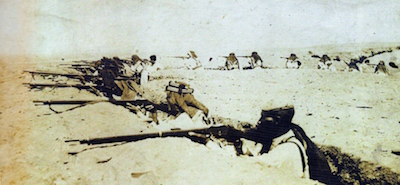
The collaboration between the Turks and the Sanusi during the First World War constitutes a historical narrative often overlooked. Presently, within Libya, remnants of these valiant Turks are preserved in a museum dedicated to the resistance against the Italians. The Turkish military presence in Libya endured from the conflict of 1911-1912 until the initial months of 1919. Though a mere 500 Turkish officers and soldiers actively engaged in this theatre, they commanded the Sanusi militia, estimated between 15,000 and 30,000, depending on varying sources. The aftermath of the war saw a profound disjunction between Libya and Turkey.
It is noteworthy that only Libya, led by Ahmad al-Sharif, responded to the call for a religious war, or jihad, issued by the Ottoman Sultan—the Caliph of Islam. Contrastingly, regions such as Egypt, India, the Caucasus, Turkistan, and all North African countries excluding Tripolitania remained indifferent, influenced by either a lack of concern or assurances of independence from the British and French post-war. Among the 270 million Muslims residing outside the Ottoman Empire, a mere 5 percent actively participated in the war efforts, while the remaining 95 percent, including conscripted soldiers, were either uninvolved or, in some instances, fought against the Caliph's army and its allies.
![]()
Sources consulted:
- Baykurt, C., “Son Osmanlı Afrikası’nda Hayat: Çöl İnsanları, Sürgünler ve Jön Türkler” (Life in the Last Ottoman Africa: Desert People, Exiles and Young Turks), Türkiye İş Bankası Kültür Yayınları, Istanbul, 2009 (prepared by İnan, A.).
- Koloğlu, O., “500 Years in Turkish Libyan Relations”, Center for Strategic Research, Ankara, 2007.
- Kurtcephe, İ., “Türk-İtalyan İlişkileri 1911-1916” (Turkish-Italian Relations 1911-1916), Türk Tarih Kurumu, Ankara, 1995.
PAGE LAST UPDATED ON 6 JANUARY 2024